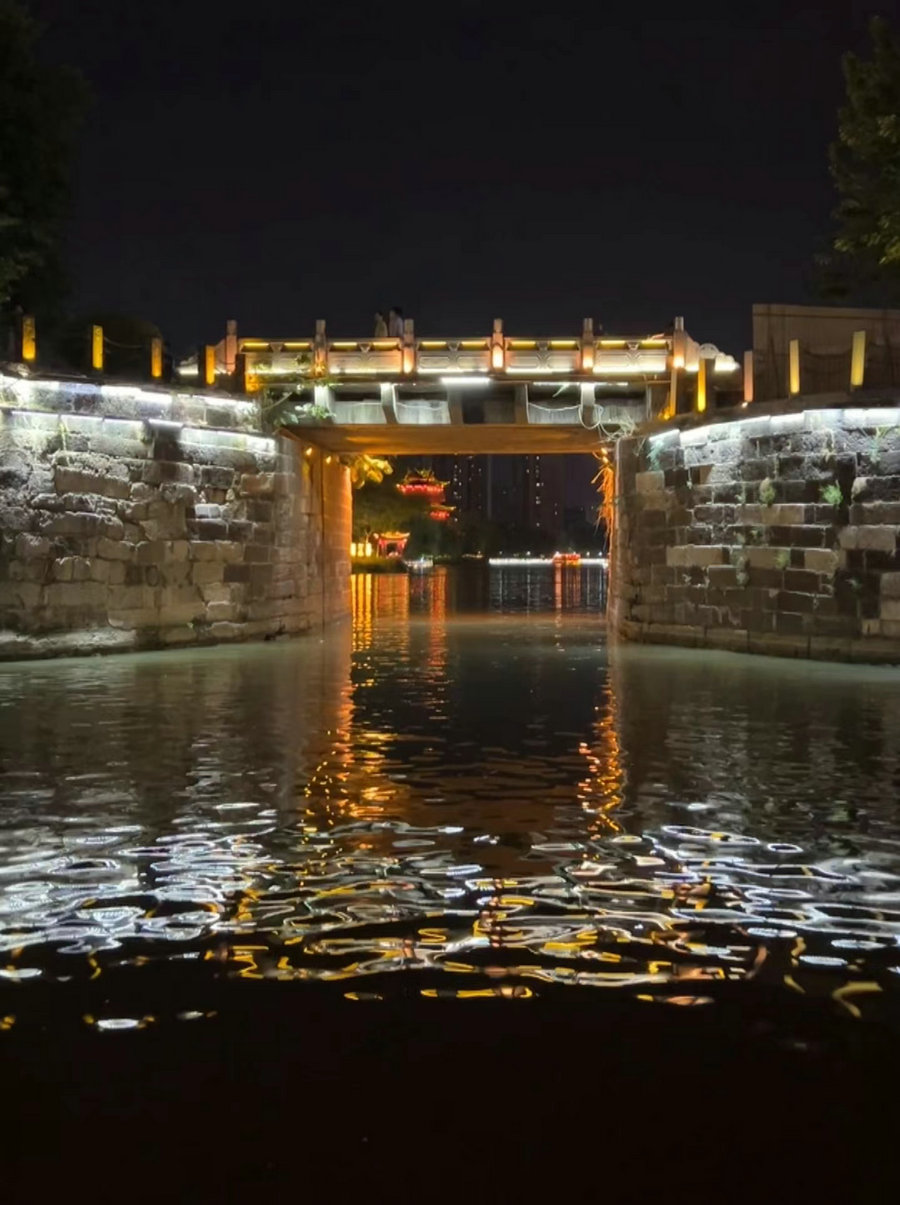

A vital section of the Grand Canal, Liyunhe was known as Qingjiangpu during the Ming and Qing dynasties (1368-1911). Boat riders can have a close-up view of the Qingjiang Sluice, one of the 58 heritage sites dotted on the 3,200-kilometer Grand Canal, listed as a UNESCO World Heritage Site in 2014.
Constructed in the early Ming Dynasty (1368-1644), the sluice, measuring 11.5 meters high and 7.3 meters wide, is the oldest and best-preserved boat lock on the Grand Canal. It was for preventing the backflow of the Yellow River and the silting up of the waterway.
"When closed, it could create a roughly one-meter water level difference on both sides," Ji Yu, a veteran local tour guide specializing in Grand Canal tourism, told the China Daily website during a media tour on Sunday. "When the sluice was opened, it pushed boats to move northward. The opening and closing of the sluice gates were carefully managed to regulate water levels to ensure the Caoyun system's smooth operation."